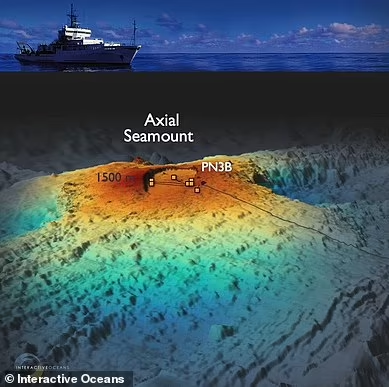“The magma reaches the surface after that period, which lasts about an hour,” Wilcock said in a statement last month.
‘The seismic activity falls down quite rapidly over the following several days, but the eruption will continue slowly for almost a month,’ he said.
For Wilcock and other scientists, the next eruption will be a significant study opportunity. They want to watch the eruption from beginning to conclusion using an array of advanced sensors.
With networks of sensors spread over the ocean waters and along the bottom, the College of the Environment at the University of Washington is home to one of the biggest underwater.

Observatories in the world. Wilcock and his team will utilize this array to collect information and photos of the event as it happens when Axial Seamount explodes.
Although Axial is not a hazardous underwater volcano, scientists may be able to anticipate eruptions from others that are because to the forecasting skills they have developed from studying it.



